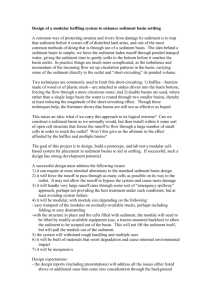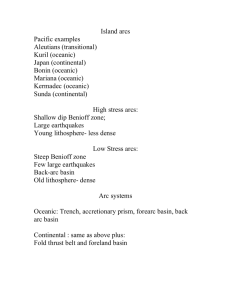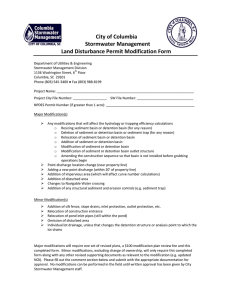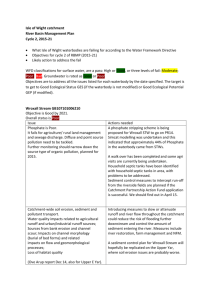Sediment Retention at Honokōwai Structure #8
advertisement
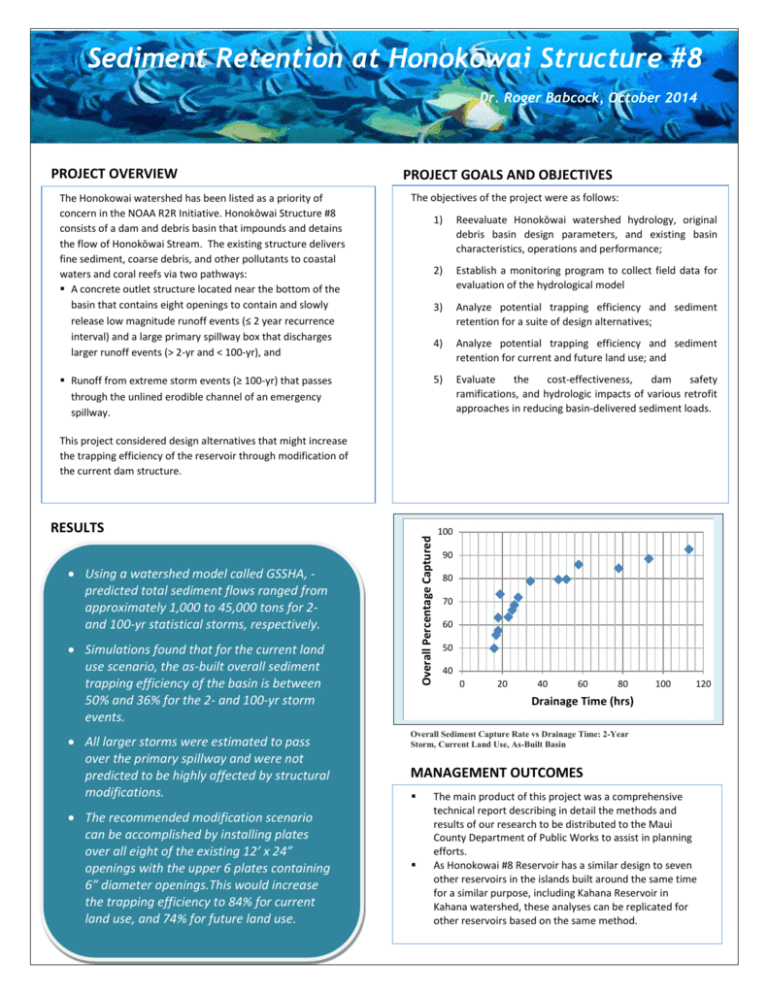
Sediment Retention at Honokōwai Structure #8 Dr. Roger Babcock, October 2014 PROJECT OVERVIEW The Honokowai watershed has been listed as a priority of concern in the NOAA R2R Initiative. Honokōwai Structure #8 consists of a dam and debris basin that impounds and detains the flow of Honokōwai Stream. The existing structure delivers fine sediment, coarse debris, and other pollutants to coastal waters and coral reefs via two pathways: A concrete outlet structure located near the bottom of the basin that contains eight openings to contain and slowly release low magnitude runoff events (≤ 2 year recurrence interval) and a large primary spillway box that discharges larger runoff events (> 2-yr and < 100-yr), and PROJECT GOALS AND OBJECTIVES The objectives of the project were as follows: Runoff from extreme storm events (≥ 100-yr) that passes through the unlined erodible channel of an emergency spillway. 1) Reevaluate Honokōwai watershed hydrology, original debris basin design parameters, and existing basin characteristics, operations and performance; 2) Establish a monitoring program to collect field data for evaluation of the hydrological model 3) Analyze potential trapping efficiency and sediment retention for a suite of design alternatives; 4) Analyze potential trapping efficiency and sediment retention for current and future land use; and 5) Evaluate the cost-effectiveness, dam safety ramifications, and hydrologic impacts of various retrofit approaches in reducing basin-delivered sediment loads. This project considered design alternatives that might increase the trapping efficiency of the reservoir through modification of the current dam structure. Overall Percentage Captured RESULTS Using a watershed model called GSSHA, predicted total sediment flows ranged from approximately 1,000 to 45,000 tons for 2and 100-yr statistical storms, respectively. Simulations found that for the current land use scenario, the as-built overall sediment trapping efficiency of the basin is between 50% and 36% for the 2- and 100-yr storm events. All larger storms were estimated to pass over the primary spillway and were not predicted to be highly affected by structural modifications. The recommended modification scenario can be accomplished by installing plates over all eight of the existing 12’ x 24” openings with the upper 6 plates containing 6” diameter openings.This would increase More Information the trapping efficiency to 84% for current Site Coordinator Name land use, and 74% for future land use. Email Address Website/Facebook 100 90 80 70 60 50 40 0 20 40 60 80 100 120 Drainage Time (hrs) Overall Sediment Capture Rate vs Drainage Time:Rate 2-Yearvs Drainage Figure 1: Overall Sediment Capture Storm, Current Land Use, As-Built Basin Time: 2-Year Storm, Current Land Use, As-Built Basin MANAGEMENT OUTCOMES The main product of this project was a comprehensive technical report describing in detail the methods and results of our research to be distributed to the Maui County Department of Public Works to assist in planning efforts. As Honokowai #8 Reservoir has a similar design to seven other reservoirs in the islands built around the same time for a similar purpose, including Kahana Reservoir in Kahana watershed, these analyses can be replicated for other reservoirs based on the same method.


